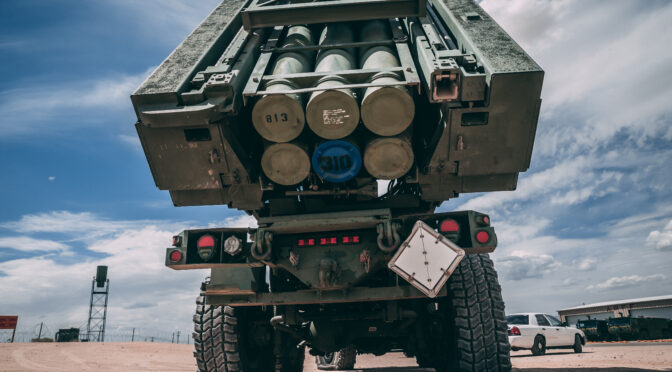By Dmitry Filipoff
For the past two weeks, CIMSEC featured pieces submitted in response to our call for articles on transforming the Marine Corps.
As high-end warfighting capabilities proliferate and become ever more powerful, especially in the Indo-Pacific, the Marine Corps is challenged to evolve and pace threats. Robust debate on transformation is a timeless feature of the profession of arms, and especially when meaningful, far-reaching change is underway. In our topic week, authors analyzed various elements of the ongoing transformation of the Marine Corps, including warfighting concepts, air defense, change management, and more. As the Marine Corps changes to meet modern threats, these efforts will continue to spark challenging debates that can help sharpen transformation.
Below are the authors who featured during CIMSEC’s topic week on transforming the Marine Corps. We thank them for their excellent contributions.
“Stand-In Forces: Disrupting Anti-Access Systems,” by Joseph Mozzi
“If competition escalates to conflict, the stand-in force already occupies a position of advantage. The stand-in force concept challenges the Marine Corps to create an adaptable system that can persist and sustain itself in a contested space, adapting its theory of warfighting to present challenges.”
“Locate, Close With, Destroy,” by Ian Brown
“General Ricci, poster child of the old guard, wanted his refurbished tanks and artillery tubes to have a public knife fight upon which he could slap the bumper sticker of “locate, close with, and destroy,” because that’s what the old guard wanted. Her “influencers”—linguistic trend analysis among their skills, not that Ricci cared—were screaming that this conflict would unfold another way.”
“EABO Beyond the Indo-Pacific: Reimagining the “Battle of the Aegean,” by Capt. Ross W. Gilchriest, USMC
“The following analysis seeks to illustrate how U.S. Marine Corps stand-in forces and EABO could be leveraged to support a naval campaign in littoral environments beyond the Indo-Pacific region.”
“Preparing for Change is as Important as Change Itself: Change Management and Force Design 2030,” by Carl Forsling
“Preparing for the change itself is a process. Just as with introducing a new electronic tool, some will be early adopters on the cutting edge, while others will trail the prevailing crowd as fast followers, and others will be dead-enders that fail to stay relevant. All of these mindsets exist within organizations, and leaders must find ways to bring all of these people onboard to execute change.”
“Antisubmarine Warfare for the Amphibious Warfare Team,” by The Good Sailor Svejk
“Without changes to ARG-Marine Expeditionary Unit (MEU) composition, hostile submarines continue to hold the ARG-MEU at risk which is why the Navy and Marine Corps must design a new ASW concept for ARG protection. An integrated Navy and Marine Corps team could develop a composite ASW element for the ARG.”
“The First Stand-in Forces: The Role of International Affairs Marines in Force Design 2030,” by Majors Zach Ota and Eric Hovey, USMC
“Simply put, any USMC effort to deter and defeat China within the USINDOPACOM area of responsibility requires Marines to have access to the air, land, and territorial seas of a foreign partner, but the Marine Corps currently lacks an international affairs operating concept to ensure that this access is granted.”
“Marine Corps Metamorphosis: Legal Considerations,” by Brent Stricker
“Despite the breadth of conversation surrounding EABO, operational law has been largely ignored in the discussions, by both critics and proponents of the new concept. As the U.S. Marine Corps develops and transforms its doctrine for EABO, it must consider what impacts international law will have on future operations.”
“The Importance of Unmanned Logistics Support For a Transforming Marine Corps,” by George Galdorisi
“Advanced base operations could involve Marines being cut off from sustainment, whether as forces that have been blockaded or forces that have been bypassed by opposing naval forces. Marines will require robust pre-positioned stocks to have enough self-sufficiency to continue the fight in the absence of sustainment, and sustainment assets must be more distributed and risk-worthy than legacy platforms. Unmanned systems can fill this gap.”
“When Only a Chisel Will Do: Marine Corps Force Design for the Modern Era,” by Capt. Jesse Schmitt
“Incremental change fails to achieve the objective of the change. The purpose of the Marine Corps’ evolution is to frustrate the adversary’s plans to mitigate Marine capabilities. Strategic competitors have observed the Department of Defense’s actions over the last two decades of operations and structured themselves accordingly.”
“Missing: Expeditionary Air Defense,” by Ben DiDonato
“In the many discussions on the Marine Corps’ new Expeditionary Advanced Base Operations (EABO) concept, the subject of air defense seems to have largely fallen through the cracks and threatened a critical capability gap. More analysis must be focused on how these forces can be defended against various aerial threats and identify key capability gaps.”
Dmitry Filipoff is CIMSEC’s Director of Online Content. Contact him at [email protected].
Featured Image: CAMP PENDLETON, Calif. – Marines with 5th Battalion, 11th Marine Regiment, 1st Marine Division, arrive at one of their launch positions with the High-Mobility Artillery Rocket System at the Air Combat Element landing strip as a part of Integrated Training Exercise 3-18 aboard the Marine Corps Air Ground Combat Center, Twentynine Palms, Calif., May 21, 2018. (U.S. Marine Corps photo by Lance Cpl. William Chockey)

